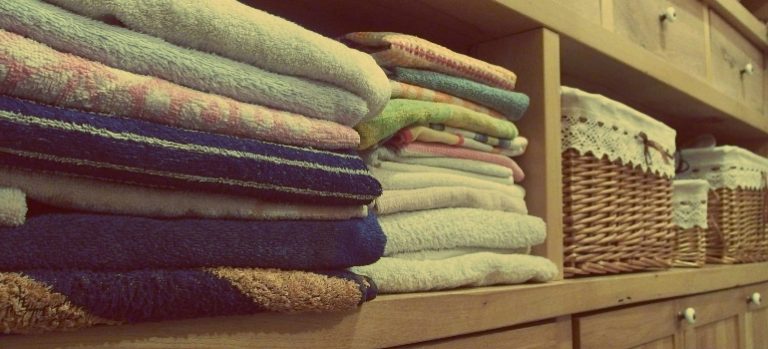
Moving into a new home marks an exciting chapter in life, filled with fresh starts and opportunities to create your ideal living space. For new homeowners, organizing a home is not just about unpacking boxes; it’s about laying the foundation for a comfortable and functional lifestyle. Efficient home organization is critical in this transition, enabling smoother daily routines and a more harmonious living environment. It can, however, present its own set of challenges, from deciding the best layout for your belongings to maintaining order in a previously unfamiliar space. Overcoming these hurdles is key to making your new house truly feel like home, where every item has its place and every space is optimized for both comfort and utility.
Setting Up Your Organization Plan: Where to Start
Moving to a new home, particularly crossing long distances, lays the groundwork for a fresh start. For the heavy lifting involved in relocating from one area to another, like from the northeast to Florida, it’s wise to let interstate movers handle it. This decision allows you to concentrate on the finer details of making your new house a home. The initial step in your efficient home organization journey after moving in is to evaluate the space in your new home and set priorities for each room. Think about how each area will be used and what items you’ll need to make those spaces functional and comfortable. This strategic approach aids in determining what to unpack first, ensuring that your most essential belongings find their rightful place swiftly.

In addition to space planning, establishing a realistic timeline and budget for your organizing efforts is crucial. It’s important to consider the costs associated with acquiring new organizational tools or furniture to enhance your home’s functionality. Divide the efficient home organization process into achievable steps, setting realistic deadlines for each to avoid feeling overwhelmed.
Decluttering Before Unpacking: Creating a Clean Slate
A new home journey often begins with the task of decluttering, a vital step that sets the tone for an organized and clutter-free environment. Before moving, especially when transitioning from locations as distant as the northeast to Florida, take the opportunity to sift through your belongings. This process not only lightens your load but also simplifies organization upon arrival, letting interstate movers handle the transportation of only what’s truly necessary.
Strategies for Sorting Through Belongings:
- Categorize Items: Start by dividing your possessions into categories (clothes, books, kitchenware, etc.). This approach makes it easier to tackle decluttering piece by piece.
- Assess Each Item’s Value: For each item, ask yourself if it’s been used in the last year, if it holds sentimental value, or if it will be beneficial in your new home.
- Be Ruthless but Thoughtful: It can be tempting to hold onto items “just in case.” However, focusing on the space and lifestyle you aim to achieve in your new home can help guide your decisions.

Deciding What to Keep, Donate, or Discard:
- Keep: Essentials, frequently used items, and pieces with strong sentimental value.
- Donate: Items in good condition that no longer serve your needs but could benefit others.
- Discard: Broken, outdated, or unusable items that cannot be repaired or repurposed.
Diligently decluttering before you pack lets you ensure that your new home starts off with only the items that add value to your life. This proactive step helps minimize clutter from the outset, facilitating a smoother transition to an organized and serene home environment.
Mastering Space and Style
In any home, finding the right balance between functionality and aesthetics is key, especially when it comes to storage. Maximizing storage in common areas, bedrooms, and kitchens for new homeowners can transform living spaces into organized, clutter-free havens. In living rooms, consider multi-functional furniture like ottomans with storage or built-in shelving units that blend seamlessly with your decor. Bedrooms benefit from under-bed storage containers and closet organizers that optimize unused space. In kitchens, utilize vertical space with hanging racks for pots and utensils and magnetic strips for knives. Innovative solutions, such as corner shelves and pull-out cabinets, can make the most of every nook.

Maintaining an Organized Home: Cultivating Daily Habits for a Tidy Space
Keeping your home organized and tidy is an ongoing process that benefits greatly from establishing daily and weekly routines. These habits ensure that your living spaces remain welcoming and clutter-free:
- Daily Quick Clean-Ups: Allocate 10-15 minutes each day for quick tidying sessions in high-traffic areas.
- Weekly Decluttering Sessions: Choose one day a week to go through different areas of the home and remove items that no longer serve a purpose.
- Involving Everyone: Assign specific tasks to each family member, making the organization a shared responsibility.
- Nightly Resets: Make it a habit to reset rooms to their organized state each night, ensuring a fresh start every morning.
By incorporating these practices into your routine, maintaining an organized home becomes a more manageable and inclusive task for everyone involved.
Adapting Organization to Life’s Changes
As life unfolds, your efficient home organization needs will inevitably evolve. The key to maintaining an efficient and comfortable living space is flexibility. Periodically reassess and adjust your organizational systems to reflect changes in your lifestyle, such as embracing new hobbies, accommodating a growing family, or adapting a room into a home office. This continuous process ensures your home remains a supportive backdrop to your life’s developments. Embrace the idea of change as an opportunity to refresh and optimize your space. Whether it’s reallocating rooms or introducing new storage solutions, staying adaptable allows your home to grow and change with you, ensuring it always meets your needs and remains a place of comfort and efficiency.
